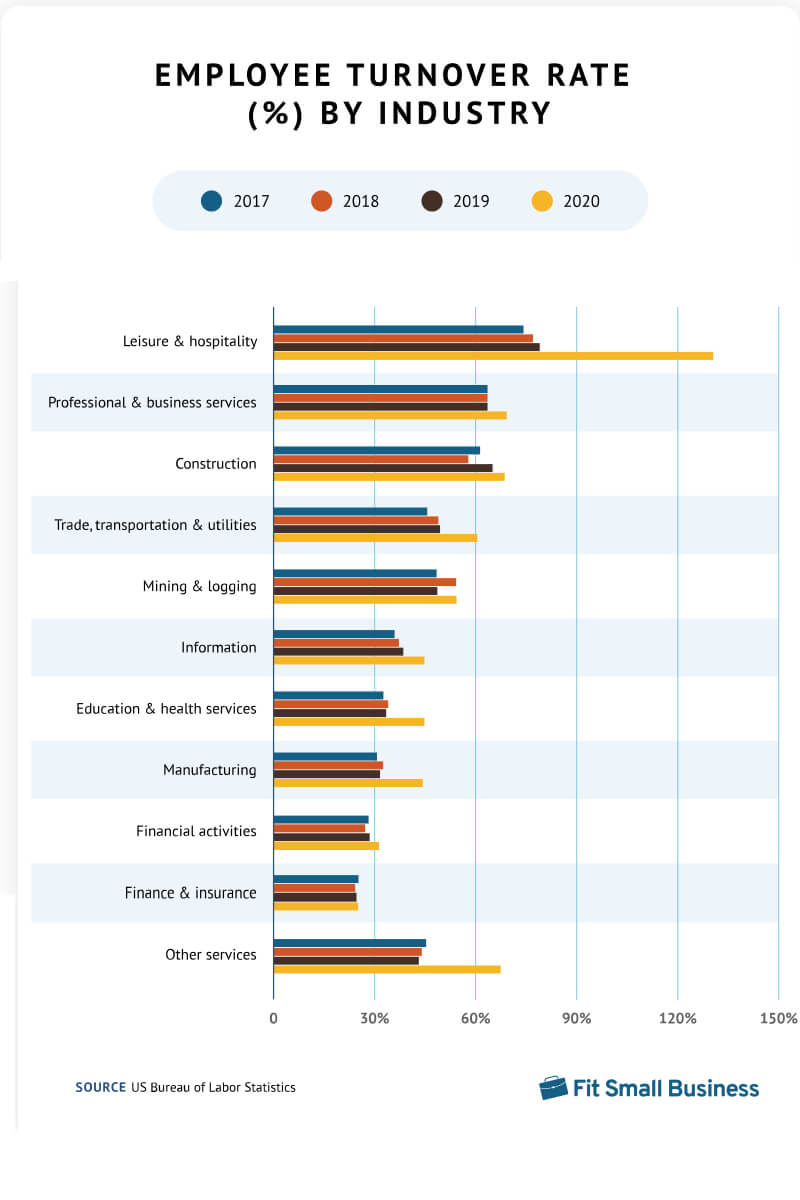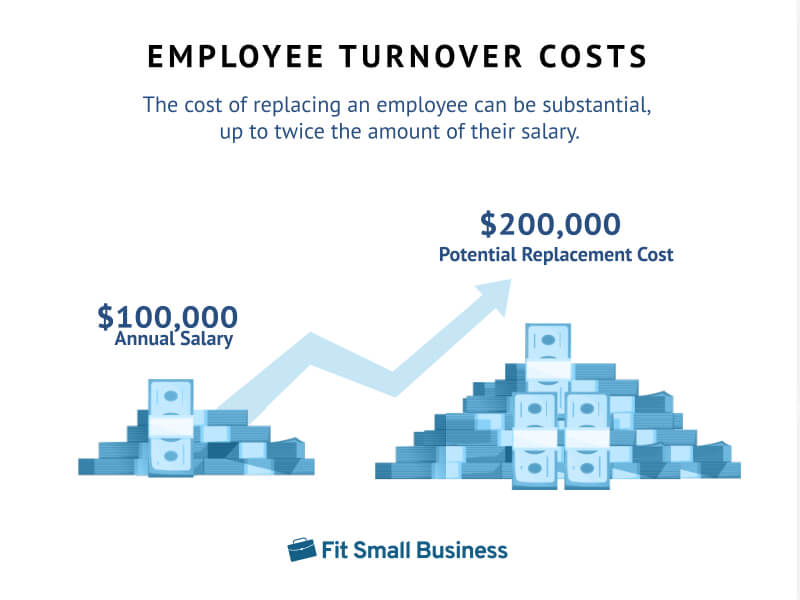Employee turnover is simply how many workers leave a company over a specific period of time. High employee turnover is an inconvenience for your HR team, but more than that, it can cause loss of company/industry knowledge and expertise, reduce employee morale, and result in a lack of employee confidence in organizational leadership.
All companies deal with employee turnover at one point or another, but knowing your employee turnover rate and understanding what it means has become increasingly important as COVID-19 has changed the way we work (a recent survey from PwC, for example, found that more than 65% of workers are looking for a new job).
How to Determine Your Employee Turnover Rate
Employers typically use quarterly or annual durations to compute their employee turnover rates. To get your company’s employee turnover rate, you’ll need to divide the number of employees that leave within a specific time period by the average number of employees that work during that period; then multiply that number by 100.
(# of workers who left the company / average number of works) * 100 For example if you employed an average of 70 workers in the fourth quarter of 2021 and 11 For example, if you employed an average of 70 workers in the fourth quarter of 2021 and 11 employees left during that quarter, your employee turnover rate would be 16%. (11 / 70) * 100
Pro Tip: You can measure employee turnover throughout the organization and smaller segments of the company—i.e., by location, department, or supervisor. Reporting on subcategories may help determine potential reasons for turnover in your organization.
What’s a Good Employee Turnover Rate?
The average turnover rate in the US for the last full year reported (2020) was 57.3%, according to the Bureau of Labor Statistics (BLS). However, this number may not give you much information at face value. The BLS figure is made up of three categories, each of which affects an organization in a different way: voluntary turnover (25%), involuntary turnover (29%), and turnover among high performers (3%). It also includes seasonal workers, who may not have been expected to continue for another year anyway. Also, we should note that prior to the COVID-19 pandemic, the overall turnover rate was lower, ranging between 43%–45% in the three years prior to 2020.
There are a number of factors you need to consider to determine the ideal rate for your organization. First, view your rate over the past couple of periods so you understand the baseline and can see if your turnover rate is trending up or down. If it is trending up, consider if there are unique or outlier events impacting that (COVID-related business effects, for example, or a merger or restructuring). Also dig into the categories we mentioned above, particularly voluntary vs involuntary.
You must also consider your company’s industry as some industries have a higher rate of turnover than others. The leisure and hospitality industry, for example, has a much higher turnover rate (130.5% in 2020; 74%–79% pre-COVID) than the education and health services industry (44.8% in 2020; 33%–34% pre-COVID).
It is best to keep all of this in mind, along with your company’s prioritization of employee retention, as you evaluate your turnover rate.
Importance of Employee Turnover Rate
Employee turnover is a particular concern for small and midsize companies. According to a recent study, nearly two-thirds of surveyed companies (with 5-500 employees) say that keeping employees is harder than hiring new employees. About 30% of respondents expect their average employee tenure to be less than a year. The biggest concern with employee turnover for small businesses is the delay it can cause in delivering quality products and services to clients.
Another effect of employee turnover is cost, as replacing an employee is expensive. Studies have shown that the cost of replacing an employee can be anywhere between 50% to 200% of the annual salary of the departed employee. That cost may include hiring a temporary replacement, recruiting for a permanent replacement, onboarding the new hire, and, if the new hire is determined to not be a good fit, going through the same process again.
Other negative effects of company turnover include a decrease in employee morale, negative perception of the company’s brand, and additional stress for existing employees. These effects could ultimately lead to more employee turnover, creating a very damaging cycle for a company.
All Turnover Is Not Bad
We should note, however, that not all turnover is bad. There are instances in which turnover can be beneficial for a company. Those benefits may include:
- Strengthened company culture: If you have employees who do not believe in your mission, vision, or core values, it may help your company culture for those employees to move on.
- Increased opportunities: When employees leave, it creates opportunity for both the organization and current workers. It may enable a high-performing employee to move into a role with greater responsibility. Additionally, it can allow the company to avoid complacency and group think by bringing in fresh perspectives and ideas from new employees with diverse backgrounds and experiences.
- Exposure of problems: When a high-performing employee leaves, many companies learn that the employee may have been covering for issues that need to be fixed—bad systems, nonexistent processes, or underperforming coworkers, to name a few. Being alerted to these issues now may prevent bigger problems later.
Other areas that may be highlighted by employee turnover, particularly if multiple employees leave for the same reason, include work-life balance, compensation and benefits, lack of advancement, and poor management. You should perform exit interviews with employees to determine their reason for leaving and then do what you can to remedy the issue.
If you need help retaining your employees, refer to our articles on employee retention and retention statistics.
Bottom Line
Understanding your workforce lifecycle is essential for maintaining a successful business, and employee turnover rate is a key calculation. Determining the frequency of turnover and understanding why it is happening will help your business make the adjustments necessary to retain your valuable employees, keep customers happy and employee morale high, and save on employee replacement costs.


